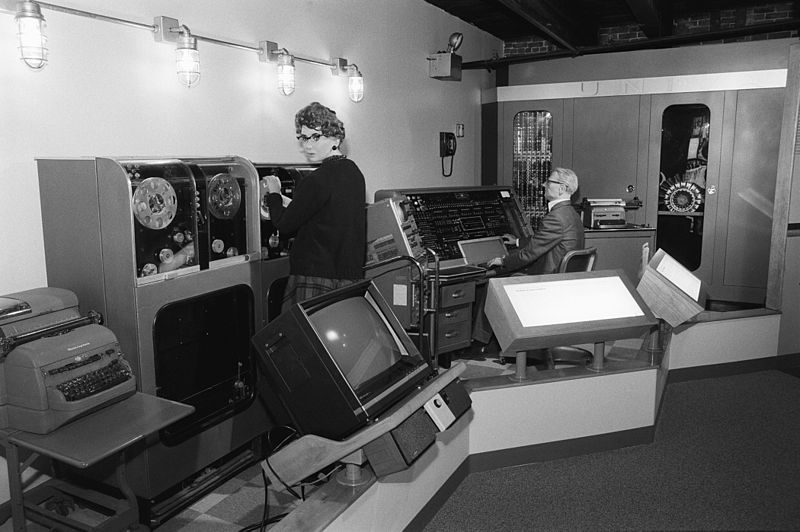
Computer Museum, Boston, June 1991, Wikimedia Commons
JDREG is still at the conceptual stage, but if you’d like to register your interest, please send an email to sally.a.berkovic@gmail.com
My Digital Death: Who will be my Executor?
I trust you’ve written your will, disbursing worldly goods to family members and charities. But what have you left to the digital world? And who will be responsible for ensuring your intentions are upheld? Enter the digital executor. I’m looking for someone to manage my digital death and whom I can trust to maintain my online dignity. The architecture of my digital death has two floors: the administrative foundations and the stories of my life – story upon story that built my life.
The administrative foundations are perfunctory but crucial: passwords noted, online bank account details in the hands of the right person, a service to ensure that backup data is accessible and someone to notify Facebook that I’ve died. Heed my advice: as someone who has had close family members drop dead, it’s no fun trying to guess the critical information needed to control their post-IRL virtual life. And tragically, in this corona era, when a person can go into hospital, and tragically, not return home, it’s best that someone has the foresight to collect the relevant data that will save the sad, sorry bureaucratic heartache that accompanies the coffin.
However, it’s the stories of our digital deaths that are substantive and require careful preservation. And I think I’ve got a solution: JDREG – the Jewish Digital Repository of Eternal Graves.
JDREG will be the global Jewish digital graveyard, filled not with bodies but with bytes.
Everyone will have their own folder and I’m suggesting that contents be collated in the following files:
- Photos: an online album filled with the faded ancestors, the humdrum of family life and a montage of images from barmitzvah, wedding and other lifecycle events
- Documents: the exit visas, naturalisation papers, ketubot [marriage contracts] professional qualifications, shul membership receipts, significant letters and diaries that chronicle a person’s life
- Audio recordings: a rendition of Friday night kiddush, favourite Israeli tunes, a memorable speech, an oral history or interview with a grandchild, a posthumous podcast
- Eulogy virtues: the way you’d like to be remembered at your funeral — in the words of David Brooks, ‘whether you were kind, brave, honest or faithful.’ Ideally, someone else will be writing this, but you might want to offer some assistance. Cue…
- Ethical will: Either written or spoken, this articulates your fundamental values, hopes and aspirations, offering fodder for your eulogy. Think of it as your internal operating system
- Digital tombstones: the artwork and inscriptions you’d like in the ether. In the digital graveyard, space is not limited, so you can set up a revolving set of images. Consider outstretched fingers for the Cohen or hands blessing the Sabbath candlesticks. Women [and the occasional man] who changed their names upon marriage can reclaim their birth name, making them easier to find in cyberspace
- Hologram upgrade: work has been done recently to create interactive recordings with Holocaust survivors in the UK and the USA. The retelling of their powerful stories are being updated for the digital age, and to ensure their longevity. Consider leaving a relevant script as in due course, perhaps everyone will be a hologram and we will all be able to have a conversation with our descendants
- Social Media Curation: decide what you’d like left for public gaze. Ditch the embarrassing, embrace your proudest moments
This pandemic era will be defined by living online, and so inevitably, it will be remembered for mourning online.
Someone’s last dying days alone in the hospital or children abroad unable to visit their dying parents added to the pain of a pandemic death. Funerals with barely a minyan, sitting shiva alone with no physical visitors, the debate about online Kaddish and the postponed consecration of tombstones added to the mourner’s grief. While we assume that nothing replaces physical interaction, future generations may well assume that online socialising is de rigeur, and that expansive international connections are as rewarding as intimate relations.
I imagine that a hybrid death will emerge as the preferred option for some families: a small, intimate funeral that can be livestreamed, a shiva that might only have one or two days of a physical presence with the rest of the week comprised of online condolence visits, Kaddish said online from the comfort of one’s home and with a community from any part of the world. Traditionally. the shiva is a time for collecting stories of the deceased and it’s a time for family members to build a legacy of solace and memories.
In the face of a digital death, what does it mean to leave a digital presence after our physical departure?
The answer lies in focusing on our digital legacy – the beautiful and the ugly, the vulnerable and the boastful. It’s difficult to imagine exactly how historians, anthropologists and philosophers will draw on digital technology to understand this era but joining JDREG – the Jewish Digital Repository of Eternal Graves will give them some very helpful source material.
Our digital lives offer us immortality: planning your digital death gives you a rare opportunity, while still alive, to control how you will be remembered after you’re gone.
First Published, Times of Israel, 25th January, 2021
